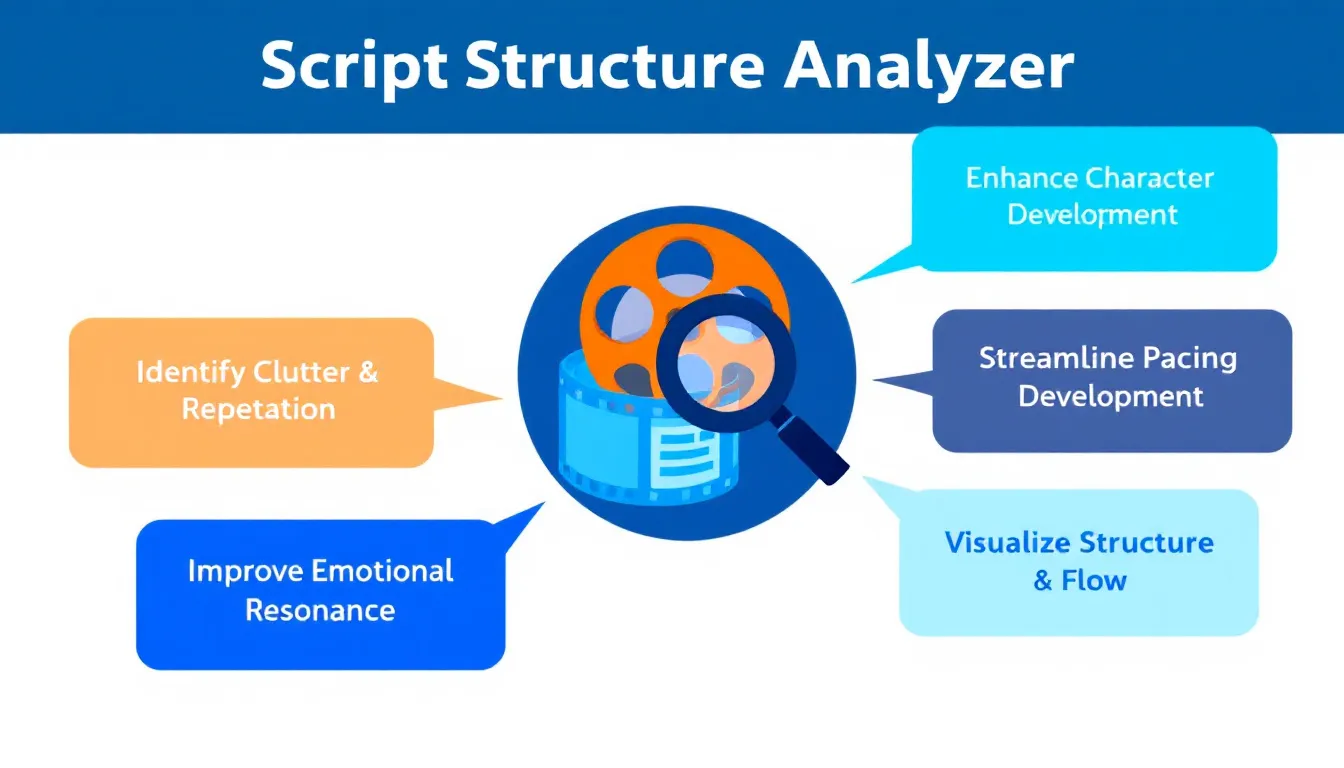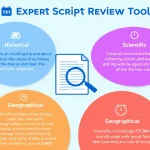Script Analysis and Restructuring
Is this tool helpful?
How to Use the Script Analysis and Restructuring Tool Effectively
Follow these steps to maximize the value you get from our Script Analysis and Restructuring Tool:
- Current Script: Paste your script into the “Current Script” box. For example, you might input a 75-page horror screenplay focused on a haunted house or a 60-page historical drama exploring a key event.
- Genre or Tone (Optional): Specify the tone or genre to tailor the analysis. You could enter “dark fantasy” or “satirical comedy” to guide the tool’s recommendations.
- Target Audience (Optional): Identify your intended audience to customize feedback. Examples include “teen sci-fi fans” or “mature drama viewers.”
- Desired Runtime (Optional): State the preferred duration of your finished script. Examples include “45 minutes” for a short film or “130 minutes” for an epic feature.
- Analyze and Restructure: Click the Analyze button to receive an in-depth review of pacing, structure, and flow.
After submission, the tool generates detailed insights highlighting strengths and weaknesses. It then provides actionable suggestions for improving scene order, pacing, and character development. You can review these recommendations and easily copy them for reference during your rewriting process.
What the Script Analysis and Restructuring Tool Does
This tool examines your screenplay to optimize storytelling by improving pacing and structure. It helps you understand how your script’s narrative flows and where pacing slows or leaps unexpectedly. Its benefits include:
- Identifying pacing issues that affect audience engagement.
- Assessing scene transitions to ensure smooth storytelling.
- Analyzing character arcs to strengthen emotional journeys.
- Evaluating plot progression to maintain narrative momentum.
- Providing tailored advice based on genre, audience, and runtime.
By acting like a script consultant, the tool highlights areas to restructure or refine for a more compelling screenplay. Whether your project is a feature, TV episode, or short film, it adapts to your specific needs.
How It Works Behind the Scenes
The tool uses natural language processing techniques to analyze your script’s text. It examines:
- Scene placement and transitions
- Character development and arc consistency
- Plot beats and narrative flow
- Dialogue effectiveness in advancing the story
- Pacing variations and rhythm
- Tension buildup and release points
This analysis allows the tool to recommend restructuring strategies that align with proven storytelling principles and industry standards.
Practical Applications of the Tool
Improving Pacing in Your Screenplay
Pacing often challenges writers, leading to parts of the script that drag or feel rushed. The tool identifies these imbalances by analyzing scene length and story rhythm. For example:
- It might suggest redistributing action scenes if the first act is too intense compared to the rest.
- It identifies where slow exposition could be tightened or paired with emotional stakes.
- It recommends trimming or merging scenes that slow the narrative momentum.
Strengthening Character Arcs
A screenplay’s emotional impact depends on well-crafted character journeys. The tool reviews character progression throughout your script and suggests:
- Adding challenges to the protagonist’s beliefs during pivotal moments.
- Developing subplots for supporting characters to complement the main arc.
- Highlighting meaningful character growth through scenes or dialogue.
Optimizing Scene Sequence
Reordering scenes can enhance suspense, clarity, and emotional resonance. The tool analyzes your existing scene structure and proposes:
- Moving reveal scenes to build tension strategically.
- Rearranging flashbacks or non-linear elements for impact.
- Adjusting subplot placement to better support the main story.
Case Study Examples
Example 1: The Indie Horror Script
Jennifer wrote a 75-page indie horror about a cursed town. She entered “horror” for genre and “young adults” as the target audience. The tool identified slow portions in the middle act and suggested redistributing scares and tightening dialogue in exposition-heavy scenes. Implementing this tightened pacing and sustained suspense throughout.
Example 2: The Historical Drama
David’s 60-page historical drama centered on political intrigue. By specifying the genre and audience as “historical drama” and “adult viewers,” the tool highlighted uneven character motivation clarity. It recommended clarifying key character goals and shifting some scenes for better narrative clarity. David streamlined the story, making it easier for viewers to follow complex details.
Frequently Asked Questions About the Script Analysis Tool
1. Will the tool rewrite my entire script?
No. The tool offers analysis and restructuring suggestions. You take creative control of revisions based on its recommendations.
2. How long does it take to get results?
Analysis usually takes a few minutes, depending on your script’s length and complexity.
3. Can I analyze TV scripts or web series?
Yes, the tool supports various formats, including feature films, TV episodes, and web series.
4. Do I need a full script to use this tool?
You can analyze full scripts or sections such as a single act or sequence for targeted feedback.
5. How often should I use this tool during writing?
You can use it after your first draft or whenever you want to assess pacing and structure improvements.
6. Does the tool provide dialogue feedback?
It offers insights on how dialogue affects character development and plot, but its main focus is overall pacing and structure.
7. Is this tool suitable for beginner writers?
Absolutely. It helps beginners understand storytelling fundamentals and improve script structure early on.
8. Can it analyze novels or short stories?
While optimized for screenplays, many analysis principles apply to narrative writing, but results are best for scripts.
9. How does the tool handle different genres?
By specifying your genre, you ensure the analysis respects genre conventions and audience expectations.
10. Can this tool help with writer’s block?
The suggestions and new perspectives often spark ideas and help overcome creative blocks.
Why Use This Script Analysis and Restructuring Tool?
Using this tool helps you:
- Save time by receiving instant, practical feedback.
- Gain objective, professional-level analysis.
- Improve your script’s pacing, flow, and structure.
- Customize suggestions based on your project’s unique needs.
- Learn storytelling techniques to apply in future works.
With every use, you sharpen your craft and bring your screenplay closer to audience-ready quality. This tool supports your creative journey by giving clear, actionable insights that improve your storytelling impact.
Important Disclaimer
The calculations, results, and content provided by our tools are not guaranteed to be accurate, complete, or reliable. Users are responsible for verifying and interpreting the results. Our content and tools may contain errors, biases, or inconsistencies. Do not enter personal data, sensitive information, or personally identifiable information in our web forms or tools. Such data entry violates our terms of service and may result in unauthorized disclosure to third parties. We reserve the right to save inputs and outputs from our tools for the purposes of error debugging, bias identification, and performance improvement. External companies providing AI models used in our tools may also save and process data in accordance with their own policies. By using our tools, you consent to this data collection and processing. We reserve the right to limit the usage of our tools based on current usability factors.







